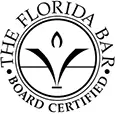How Can I Prove My Pain and Suffering?
In personal injury cases, you may have heard of pain and suffering. Pain and suffering is damage you can sue for after an accident.
Every personal injury accident victim experiences some physical and mental pain, and they should receive compensation for it. Many victims face one issue: how to prove their pain and suffering accurately. This burden is where the help of an experienced lawyer comes into play.
How Is Pain and Suffering Calculated?
Pain and suffering are considered non-economic damages. Non-economic damage is damage in a personal injury claim that a specific dollar amount cannot measure. You cannot easily quantify these damages, but they hurt a person’s well-being.
In addition to pain and suffering, other non-economic damages include loss of enjoyment of life, loss of companionship, and reputational damage. Although pain and suffering are considered non-economic damage, this damage can be calculated and proven in a claim. Two ways to prove pain and suffering damage are through physical pain and mental pain.
Proving Mental Anguish
Another type of pain that many personal injury victims can list under pain and suffering is mental anguish. Just like physical injuries, your mental health can take a severe toll after being involved in a traumatic accident. Depending on the severity of the incident, the mental trauma you experience can last for years.
Your mental trauma and your physical well-being go hand in hand. If you are not in the right state of mind, it can affect your ability to recover from your physical injuries. Unfortunately, mental trauma is challenging to prove.
How to Document Physical Pain
 Many people underestimate how powerful of an influence pain can be. For example, you can be a car accident victim and continue feeling uncomfortable weeks after an accident. In some cases, your back pain can be so severe that you have issues standing up for extended periods, which can affect your ability to perform your job.
Many people underestimate how powerful of an influence pain can be. For example, you can be a car accident victim and continue feeling uncomfortable weeks after an accident. In some cases, your back pain can be so severe that you have issues standing up for extended periods, which can affect your ability to perform your job.
To prove you experienced physical pain from your injuries, you may provide evidence of:
Medical Records
One of the types of evidence that you can provide is a copy of your medical records. Jurors and judges are more prone to believe the nature of your injuries with official documents like medical records to back them up.
Your medical records contain information such as your pre-existing conditions, your physical condition following the accident, medical notes detailing the nature of your injuries, and so on. If you need CT scans, laboratory tests, and other procedures, the results of those tests can also add credibility to your pain and suffering claim.
Missing Time at Work
Another type of evidence you can use to prove pain and suffering is logging records of the time you have missed from work. Many people do not consider that recovery does not stop once a medical procedure has occurred.
You may need to take additional time off from work to rehabilitate. Even if you take time off to recover, you can still experience pain from your injuries. The time taken off of work can prove your pain’s severity. Many workers try to avoid using sick leave until it is necessary.
Pictures and Video Evidence
If possible, you can also take videos and photographic evidence that can paint a visual picture of your injuries. There is a monumental difference between describing the pain you experienced from your accident and providing pictures of your injuries.
The photographs and videos can remain in a juror’s mind for more than a few statements. Pictures and video evidence are just as credible as medical documents. It is difficult for insurance companies to deny your claim outright when you provide visual proof.
How Can You Prove Emotional Distress?
Five specific factors must be present in a claim to prove mental anguish.
These factors include:
- Cause and effect. You need a paper trail of how your mental state affected your life. This record can include letters from your family and friends and documentation of any medical treatment you have sought for your symptoms.
- The intensity of your distress. Jurors and judges are more prone to take your mental anguish seriously based on the intensity of your symptoms and the length of time you experience them.
- The root cause of your emotional distress. Jurors and judges are more likely to take your mental anguish damages seriously when your personal injury accident is traumatic. The more traumatizing the accident, the more the courts are likely to reward you with compensation.
- The physical symptoms causing your emotional distress. Depending on the type of mental disorder, there are significant physical symptoms that you can experience that are associated with them. For example, a person suffering from post-traumatic stress disorder can also suffer from sleep disorders and irritability.
- Psychological symptoms medical professional documented. As with physical injuries, a qualified medical professional must document psychological symptoms. Some examples of credible documentation include copies of psychological records or medical notes about psychological symptoms.
What Methods Are Used For Defining Pain?
Non-economic damages, such as pain and suffering, allow personal injury victims to get compensated for factors that are usually not covered in a case. Victims have the opportunity to receive compensation for any grief, emotional, or long-term psychological trauma that is associated with their accident. Through pain and suffering, victims can receive compensation for damages that are not as noticeable to other medical professionals, like nerve damage. You can obtain additional compensation to pay for your treatments.
Per Diem Method
Even though it is difficult to calculate a specific dollar amount for pain and suffering, lawyers use a method to determine an amount for compensation. This method is known as the per diem method. Through this method, lawyers request their clients get compensated for each day lived with the pain of their accident. Lawyers will use a daily rate to determine your amount of compensation accurately. This daily rate usually derives from the victim’s daily income.
Multiplier Method
Another standard method that lawyers use is the multiplier method. Through the multiplier method, lawyers add up your economic damages and multiply it by a number. Whether the court uses a multiplier number for your claim depends on several factors. These factors include the severity of your injuries, your ability to make a speedy recovery, the impact that your injuries have on your day-to-day life, and the liability of the other party.
How Do Insurance Company’s Calculate Pain and Suffering?
Lawyers are not the only parties who use these methods to calculate pain and suffering. Insurance companies also use the multiplier method to calculate a person’s damages for pain and suffering. If insurance companies use the same methods as lawyers to calculate damages for pain and suffering, they should be on the same page with approving personal injury claims. Not necessarily. Even though insurance companies know what you can obtain for pain and suffering, they will do everything they can to avoid paying you out.
Delaying Treatment
To prevent you from obtaining the total amount of compensation for pain and suffering, insurance companies will make a couple of accusations against you. One of the first accusations is that you delayed treatment for your injuries. Insurance adjusters will question your injuries’ validity when you have prolonged seeking immediate medical attention. Delaying medical treatment can work against you in your personal injury claim.
Pre-Existing Conditions
Another accusation the insurance company will make against you is that you are trying to receive compensation for conditions or injuries that you already have. Many insurance companies refuse compensation when the claimant’s injuries result from pre-existing conditions. Because of this, adjusters will argue that your injuries resulted from one of your pre-existing conditions, not the accident you were in.
Working With a Personal Injury Lawyer
When it comes to determining compensation for pain and suffering, the way that insurance companies respond is interesting. Although it is difficult for them to pinpoint a specific amount, they can suddenly determine the amount of compensation that it should not be.
You deserve full compensation for the injuries you endured from your accident. However, your injuries may prevent you from remaining on your toes and efficiently proving your pain and suffering damage. A personal injury lawyer can help you prove your pain and suffering damages to any judge, juror, and insurance adjuster involved in your claim.
Assigning value to your claim
Your lawyer can help assign the most value to your pain and suffering damage. Lawyers know how to gather the best evidence that can help strengthen your case and prove your injuries’ validity. In addition to collecting the necessary documents for your claim, lawyers can request that certain medical witnesses provide testimony.
Routine doctor visits
Lawyers can also offer the best legal advice for you throughout the process. One of the best pieces of advice that you may receive is to continue attending your routine doctor visits. It is more difficult for insurance companies to deny your injuries when you provide evidence of consistent doctor visits.
The more recent the results of your routine doctor visits, the more credibility added to your injuries. Whether you suffer from physical injuries, mental anguish, or both from your accident, this advice can help you discredit most of the assumptions the insurance company makes about you.
Disputing weak settlements
Your claim does not have to progress to trial. In many cases, insurance companies will choose to come to a settlement agreement with you to resolve your claim quickly. Even more often, insurance companies will throw out a small settlement offer and hope you accept it.
A lawyer can help you avoid this tactic by offering to represent you and deny any weak settlement offers thrown on the table. What may seem like a large settlement may not even be enough to cover your injuries.
Representation at trial
If you decide not to accept the insurance company’s settlement offer, you still have legal options that can work in your favor. You can choose to go to trial and sue for more compensation. If you decide to go this route, your personal injury lawyer can represent you and create the best case possible.
Your lawyer can assist with preparing you efficiently for every step of your trial. If you get asked to be deposed by the other party’s legal team, your lawyer can assist you and prepare you for that process.
Even if your claim proceeds to trial, you still have the right to accept a settlement offer throughout your trial. In many personal injury cases, insurance companies feel pressured into meeting your demands when they find out that your lawyer is willing to take your claim to trial.
Consult a lawyer today following an accident

Many people assume they will receive compensation for medical bills and other financial losses after a personal injury. However, too many people fail to consider pain and suffering, and they might accept a settlement offer that does not fully compensate for such losses. Having representation can avoid losing the money you deserve.
Proving pain and suffering damage does not have to be as confusing as you believe. A skilled lawyer can help assess your claim and help you determine what you truly deserve for compensation. If you have suffered an injury from a personal injury accident, allow a skilled lawyer to prove why you deserve to get adequately compensated for your pain and suffering. Contact a lawyer as soon as possible so you do not miss the deadline to file a claim.
Free Consultation
We Are Here For You 24/7
Reviews
– Elissa M.
“Really pleased with Boohoff Law! Received immediate responses when I had any questions. Treated amazingly by all staff … made this process a true breeze!”
– Caitlyn M.
– Brandy K.
Related Posts
I Was Partially At-Fault in a Rear-End Crash. Can I Still Get Compensation in Florida?
I Was a Passenger in an Uber Accident. What Are My Rights?
What Damages Can I Recover After a Jackknife Truck Accident?
Recovery is personal.
We’re here for you.
We’re close by. And if you can’t make it to us, we’ll meet you where you need us, at home or in the hospital.
You're better off with Boohoff.











The information on this website is for general information purposes only. Nothing on this site should be taken as legal advice for any individual case or situation. This information is not intended to create, and receipt or viewing does not constitute, an attorney-client relationship.
Disclaimer: The results and testimonials presented on this website are based on the unique facts and circumstances of each case. Past results do not guarantee or predict similar outcomes in future cases. Every legal matter is different, and you should not rely on prior case results as an expectation of future performance.
available 24/7
(877) 999-9999
